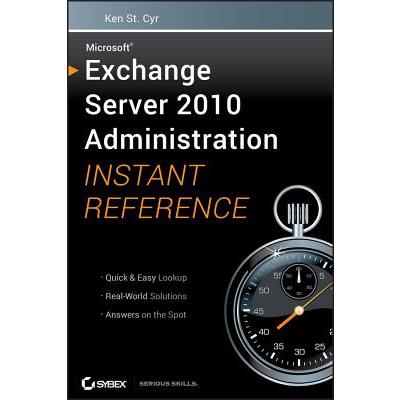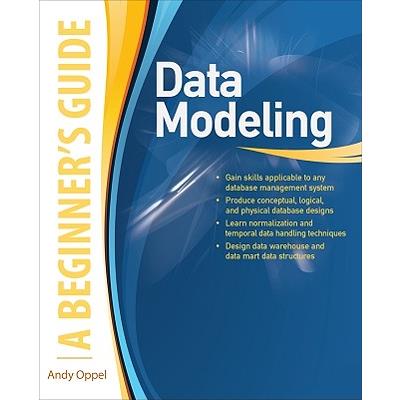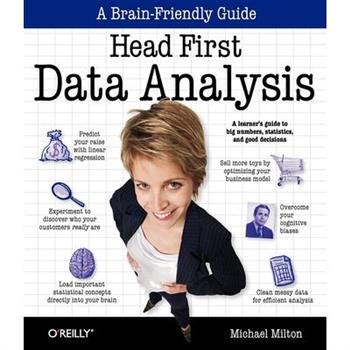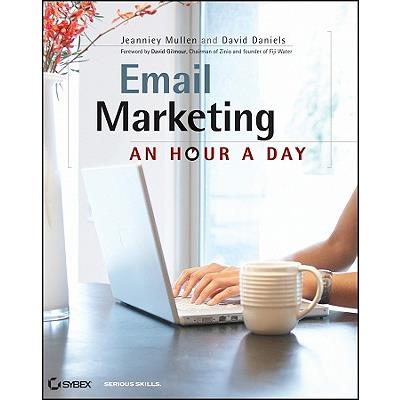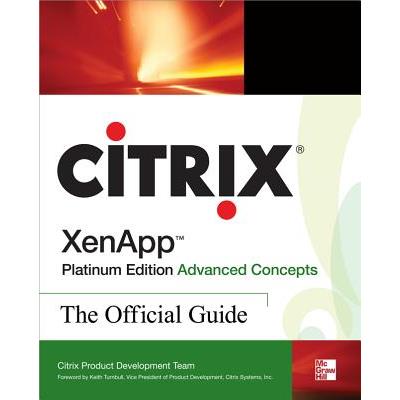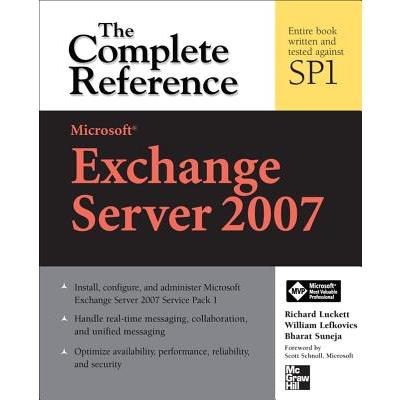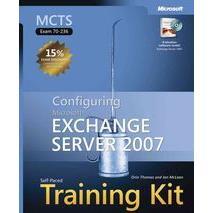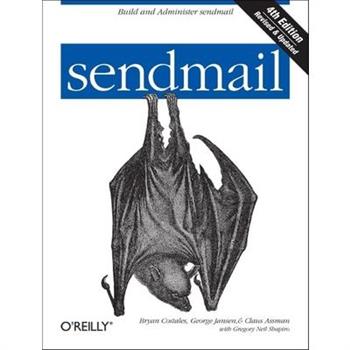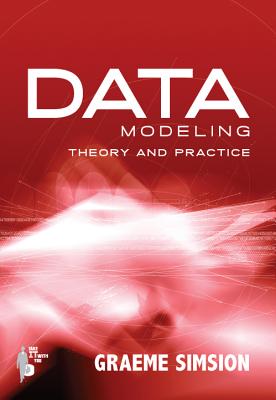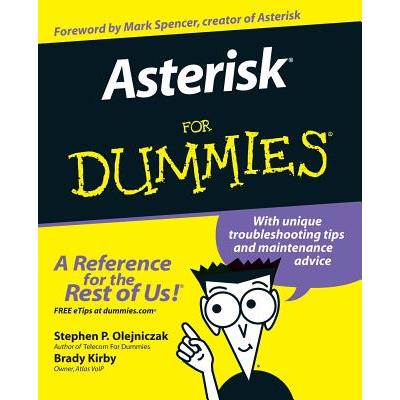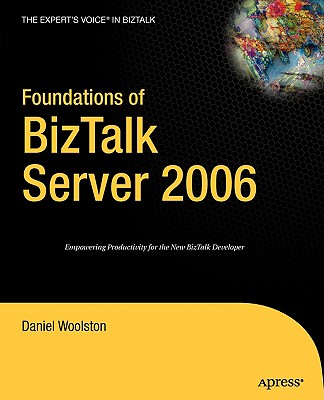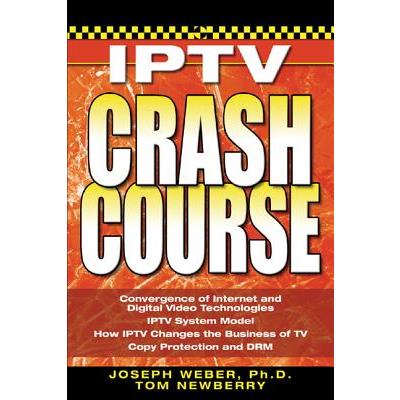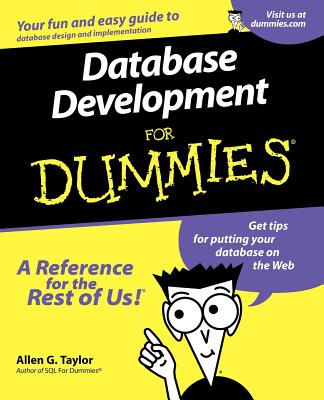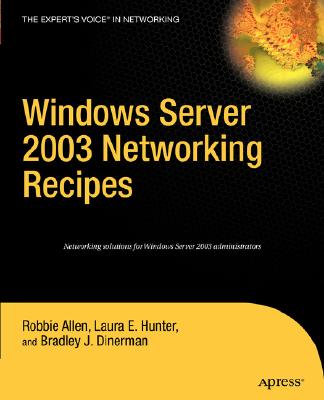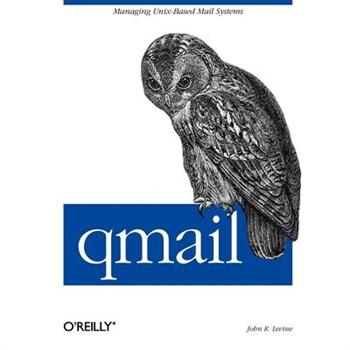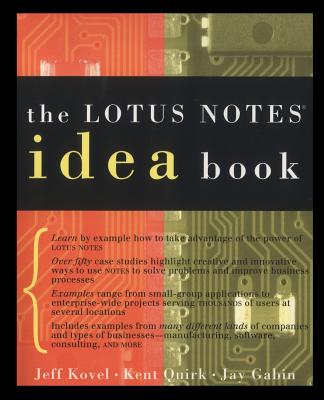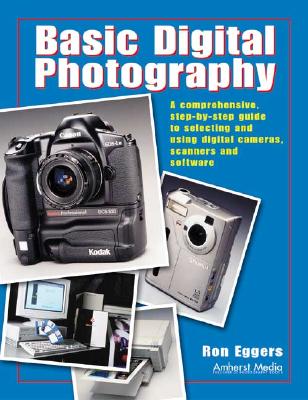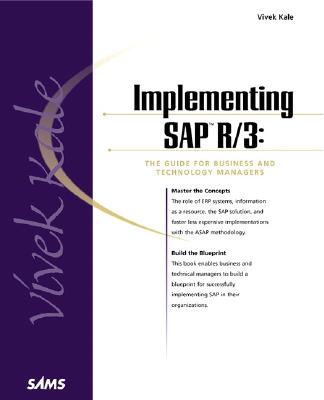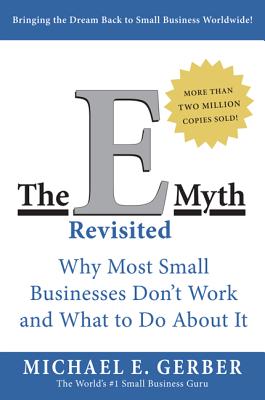Microsoft Exchange Server 2010 Administration Instant Reference
Questions about Exchange Server 2010? Flip open this easy-access guide! Have all your questions about Microsoft's new Exchange Server 2010 answered on the spot with this handy reference guide. Designed for easy access with special headings, thumb tabs, easy-to-read lists, and more, this book is the perfect quick resource for those day-to-day issues that come up just when you least expect them. Covers the number one product of its kind, Microsoft Exchange Server 2010 Offers a quick-access reference for your day-to-day administration of Exchange Server 2010 Includes thumb tabs, secondary and tertiary tables of contents, and special heading treatments to provide quick and easy lookup, as well as quick-reference tables, lists, and step-by-step instruction to provide Exchange administrators answers on the spot Keep this helpful, handy guide within easy reach.
Data Modeling
Publisher's Note: Products purchased from Third Party sellers are not guaranteed by the publisher for quality, authenticity, or access to any online entitlements included with the product.Essential Skills--Made Easy!Learn how to create data models that allow complex data to be analyzed, manipulated, extracted, and reported upon accurately. Data Modeling: A Beginner's Guide teaches you techniques for gathering business requirements and using them to produce conceptual, logical, and physical database designs. You'll get details on Unified Modeling Language (UML), normalization, incorporating business rules, handling temporal data, and analytical database design. The methods presented in this fast-paced tutorial are applicable to any database management system, regardless of vendor.Designed for Easy LearningKey Skills & Concepts--Chapter-opening lists of specific skills covered in the chapterAsk the expert--Q&A sections filled with bonus information and helpful tipsTry This--Hands-on exercises that show you how to apply your skillsNotes--Extra information related to the topic being coveredSelf Tests--Chapter-ending quizzes to test your knowledgeAndy Oppel has taught database technology for the University of California Extension for more than 25 years. He is the author of Databases Demystified, SQL Demystified, and Databases: A Beginner's Guide, and the co-author of SQL: A Beginner's Guide, Third Edition, and SQL: The Complete Reference, Third Edition.
Data Modeling Made Simple
Data Modeling Made Simple will provide the business or IT professional with a practical working knowledge of data modeling concepts and best practices. This book is written in a conversational style that encourages you to read it from start to finish and master these ten objectives: Know when a data model is needed and which type of data model is most effective for each situation Read a data model of any size and complexity with the same confidence as reading a book Build a fully normalized relational data model, as well as an easily navigatable dimensional model Apply techniques to turn a logical data model into an efficient physical design Leverage several templates to make requirements gathering more efficient and accurate Explain all ten categories of the Data Model Scorecard Learn strategies to improve your working relationships with others Appreciate the impact unstructured data has, and will have, on our data modeling deliverables Learn basic UML concepts Put data modeling in context with XML, metadata, and agile development Book Review by Johnny Gay In this book review, I address each section in the book and provide what I found most valuable as a data modeler. I compare, as I go, how the book's structure eases the new data modeler into the subject much like an instructor might ease a beginning swimmer into the pool. This book begins like a Dan Brown novel. It even starts out with the protagonist, our favorite data modeler, lost on a dark road somewhere in France. In this case, what saves him isn't a cipher, but of all things, something that's very much like a data model in the form of a map! The author deems they are both way-finding tools.
Data Analysis
Today, interpreting data is a critical decision-making factor for businesses and organizations. If your job requires you to manage and analyze all kinds of data, turn to Head First Data Analysis, where you'll quickly learn how to collect and organize data, sort the distractions from the truth, find meaningful patterns, draw conclusions, predict the future, and present your findings to others. Whether you're a product developer researching the market viability of a new product or service, a marketing manager gauging or predicting the effectiveness of a campaign, a salesperson who needs data to support product presentations, or a lone entrepreneur responsible for all of these data-intensive functions and more, the unique approach in Head First Data Analysis is by far the most efficient way to learn what you need to know to convert raw data into a vital business tool. You'll learn how to: Determine which data sources to use for collecting information Assess data quality and distinguish signal from noise Build basic data models to illuminate patterns, and assimilate new information into the models Cope with ambiguous information Design experiments to test hypotheses and draw conclusions Use segmentation to organize your data within discrete market groups Visualize data distributions to reveal new relationships and persuade others Predict the future with sampling and probability models Clean your data to make it useful Communicate the results of your analysis to your audience Using the latest research in cognitive science and learning theory to craft a multi-sensory learning experience, Head First Data Analysis uses a visually rich format designed for the way your brain works, not a text-heavy approach that puts you to sleep.
Data Modeling for the Business
Did you ever try getting Businesspeople and IT to agree on the project scope for a new application? Or try getting Marketing and Sales to agree on the target audience? Or try bringing new team members up to speed on the hundreds of tables in your data warehouse -- without them dozing off?Whether you are a businessperson or an IT professional, you can be the hero in each of these and hundreds of other scenarios by building a High-Level Data Model. The High-Level Data Model is a simplified view of our complex environment. It can be a powerful communication tool of the key concepts within our application development projects, business intelligence and master data management programs, and all enterprise and industry initiatives.Learn about the High-Level Data Model and master the techniques for building one, including a comprehensive ten-step approach and hands-on exercises to help you practice topics on your own. In this book, we review data modeling basics and explain why the core concepts stored in a high-level data model can have significant business impact on an organization. We explain the technical notation used for a data model and walk through some simple examples of building a high-level data model. We also describe how data models relate to other key initiatives you may have heard of or may be implementing in your organization.This book contains best practices for implementing a high-level data model, along with some easy-to-use templates and guidelines for a step-by-step approach. Each step will be illustrated using many examples based on actual projects we have worked on. Names have been changed to protect the innocent, but the pain points and lessons have been preserved. One example spans an entire chapter and will allow you to practice building a high-level data model from beginning to end, and then compare your results to ours.Building a high-level data model following the ten step approach you'll read about is a great way to ensure you will retain the new skills you learn in this book.As is the case in many disciplines, using the right tool for the right job is critical to the overall success of your high-level data model implementation. To help you in your tool selection process, there are several chapters dedicated to discussing what to look for in a high-level data modeling tool and a framework for choosing a data modeling tool, in general. This book concludes with a real-world case study that shows how an international energy company successfully used a high-level data model to streamline their information management practices and increase communication throughout the organization--between both businesspeople and IT.
Email Marketing
If the idea of starting an email marketing campaign overwhelms you, the authors of Email Marketing: An Hour a Day will introduce you to email marketing basics, demonstrate how to manage details and describe how you can track and measure results. Case studies, step-by-step guides, checklists, quizzes and hands-on tutorials will help you execute an email marketing campaign in just one hour a day. When you feel comfortable with the basics, learn how to use video and audio enabled email, implement tools like mobile devices and leverage social networks.
Citrix Xenapp(tm) Platinum Edition Advanced Concepts: The Official Guide
Publisher's Note: Products purchased from Third Party sellers are not guaranteed by the publisher for quality, authenticity, or access to any online entitlements included with the product.The Only Official Guide to All Components of Citrix XenApp Platinum EditionCitrix XenApp, the new name for Citrix Presentation Server, is an end-to-end Windows application delivery system that offers both client-side and server-side application virtualization, for optimal application performance and flexible delivery options. It's the best access experience for any user. With the secure application architecture, organizations can centralize applications and data in secure data centers, reducing costs of management and support, increasing data security, and ensuring fast, reliable performance.Build and maintain a scalable, cost-effective, and secure enterprise application delivery infrastructure with expert advice from the Citrix Product Development Team. Citrix XenApp Platinum Edition Advanced Concepts: The Official Guide explains how to configure hardware and software and centrally manage enterprise resources. You'll learn to use Citrix Conferencing Manager, Citrix Access Gateway, Citrix Password Manager, and other tools. The book also includes in-depth coverage of advanced troubleshooting techniques, disk and memory tuning methods, and security strategies.Deploy Citrix XenApp across a large enterprise successfullyUnderstand the network bandwidth requirements of server-to-server communication, and communication between Access Management Console and serversSecure remote access with Citrix Access GatewayAdminister and customize Citrix Password ManagerMaximize the capabilities of Citrix Conferencing ManagerSecure Citrix XenApp using certificates, encryption, and smart cardsConfigure Virtual IP addressing, PDA synchronization, and SpeedScreen browser accelerationGain insights from Citrix eLabs server load and capacity hardware testing
Microsoft Exchange Server 2007: The Complete Reference
Publisher's Note: Products purchased from Third Party sellers are not guaranteed by the publisher for quality, authenticity, or access to any online entitlements included with the product."Exchange experts and Microsoft MVPs Richard Luckett, William Lefkovics, and Bharat Suneja have packed this book with practical guidance, useful information, and years of knowledge and experience. If you're responsible for one or more aspects of an Exchange 2007-based messaging system, keep this book close, as you'll be referring to it often!" --Scott Schnoll, Principal Technical Writer, Exchange Server Product Team, Microsoft Corporation
Apache Cookbook
There's plenty of documentation on installing and configuring the Apache web server, but where do you find help for the day-to-day stuff, like adding common modules or fine-tuning your activity logging? That's easy. The new edition of the Apache Cookbook offers you updated solutions to the problems you're likely to encounter with the new versions of Apache. Written by members of the Apache Software Foundation, and thoroughly revised for Apache versions 2.0 and 2.2, recipes in this book range from simple tasks, such installing the server on Red Hat Linux or Windows, to more complex tasks, such as setting up name-based virtual hosts or securing and managing your proxy server. Altogether, you get more than 200 timesaving recipes for solving a crisis or other deadline conundrums, with topics including: Security Aliases, Redirecting, and Rewriting CGI Scripts, the suexec Wrapper, and other dynamic content techniques Error Handling SSL Performance This book tackles everything from beginner problems to those faced by experienced users. For every problem addressed in the book, you will find a worked-out solution that includes short, focused pieces of code you can use immediately. You also get explanations of how and why the code works, so you can adapt the problem-solving techniques to similar situations. Instead of poking around mailing lists, online documentation, and other sources, rely on the Apache Cookbook for quick solutions when you need them. Then you can spend your time and energy where it matters most.
Sendmail
A classic O'Reilly title since 1993, sendmail now covers Versions 8.10 through 8.14 of this email routing program, including dozens of new features, options, and macros. This edition also takes a more nuts-and-bolts approach than its predecessors. It includes both an administration handbook and a reference guide that provide you with clear options for installing, configuring and managing sendmail's latest versions and companion programs. The sendmail program has withstood the test of time because of its ability to solve the mail-routing needs of all sites large or small, complex or simple. But it's also difficult to configure and even more difficult to understand. That's why this book has proven valuable since the dawn of email. With it, you will be able to configure the program to meet any need, so that you never again have to call in a sendmail guru to bail you out. sendmail includes the following sections: Some Basics is especially useful for people new to the program. It covers the basic concepts underlying mail delivery and the roles sendmail plays in that delivery Administration covers all aspects of handling sendmail, from downloading and installing new releases to managing mailing lists and aliases Configuration Reference contains a heavily cross-referenced guide for configuring and tuning sendmail. Every arcane detail of sendmail is listed alphabetically Appendices contain more detail about sendmail than you may ever need This edition also includes new material on SSL and AUTH and a new chapter on Mitlers. If you're interested in what has changed since the last edition, one appendix categorizes the many improvements of sendmail's intervening versions by chapter, complete with references to the appropriate sections and page numbers in the book. With sendmail, system administrators, programmers, network engineers, and even inexperienced users will be able to match this challenging but necessary utility to the needs of their network.
Microsoft(r) Office Sharepoint(r) Server 2007: A Beginner’s Guide
Publisher's Note: Products purchased from Third Party sellers are not guaranteed by the publisher for quality, authenticity, or access to any online entitlements included with the product.Set up and administer a SharePoint Server 2007 environmentGet started on Microsoft Office SharePoint Server 2007 quickly and easily with help from this step-by-step guide. Using clear instructions, Microsoft Office SharePoint Server 2007: A Beginner's Guide shows you how to set up and configure SharePoint Server, collect and store data, build lists and libraries, and enable enterprise search capabilities. You'll learn how to create portals and Web pages, secure your SharePoint Server 2007 environment, and optimize performance. Microsoft Office 2007 integration techniques are also covered. Install and configure SharePoint Server 2007Secure your SharePoint Server network and dataEasily locate files and folders using the Search featureSimplify data collection using forms and workflowsLogically organize content into lists and librariesMonitor, maintain, and back up your SharePoint Server environmentBuild Web applications and portals from reusable, modular Web PartsImprove efficiency using customized views and metadata schemesSeamlessly integrate with Microsoft Office Outlook 2007
Microsoft(r) Office Sharepoint(r) Server 2007: The Complete Reference
Publisher's Note: Products purchased from Third Party sellers are not guaranteed by the publisher for quality, authenticity, or access to any online entitlements included with the product.The definitive guide to Microsoft Office SharePoint Server 2007"This well-planned and well-written book offers a comprehensive reference for IT professionals, application developers and business analysts working with SharePoint applications." --James A. Robertson, MCSD.NET, Senior Software Engineer, Applied Information SciencesDeploy and manage Microsoft Office SharePoint Server 2007 in the enterprise with help from this one-stop resource. Through detailed instructions, screenshots, and code samples, this comprehensive guide shows you, step-by-step, how to use SharePoint Server and make the most of all its powerful tools and utilities.Microsoft Office SharePoint Server 2007: The Complete Reference explains how to develop a customized installation plan, configure the server for optimal performance, and administer users, documents, and content. You'll get full details on designing feature-rich portals and collaboration sites, creating user-friendly forms and workflows, using modular Web Parts, and incorporating business data. Install and configure SharePoint Server for the entire enterpriseManage the server from the Central Administration siteDesign SharePoint Server portals, websites, lists, and document librariesWork with SharePoint Web Parts or build your ownEnsure cross-site consistency using site columns and content typesCreate site definitions and templates using SharePoint Designer and Visual StudioBuild custom workflows using SharePoint Designer Extend SharePoint Server using the Object Model and Event ReceiversImport and map enterprise information using the Business Data CatalogUse the advanced services of Office Search and Excel Web Services
Data Modeling
Graeme Simsion, author of several bestsellers including The Rosie Project, provides a detailed review of the extensive literature on data modeling and logical database design, referencing nearly 500 publications, with a strong focus on their relevance to practice.DATA MODELING THEORY AND PRACTICE is for practitioners and academics who have learned the conventions and rules of data modeling and are looking for a deeper understanding of the discipline. The coverage of theory includes a detailed review of the extensive literature on data modeling and logical database design, referencing nearly 500 publications, with a strong focus on their relevance to practice. The practice component incorporates the largest-ever study of data modeling practitioners, involving over 450 participants in interviews, surveys and data modeling tasks. The results challenge many longstanding held assumptions about data modeling and will be of interest to academics and practitioners alike.Graeme Simsion brings to the book the practical perspective and intellectual clarity that have made his Data Modeling Essentials a classic in the field. He begins with a question about the nature of data modeling (design or description), and uses it to illuminate such issues as the definition of data modeling, its philosophical underpinnings, inputs and deliverables, the necessary behaviors and skills, the role of creativity, product diversity, quality measures, personal styles, and the differences between experts and novices.Data Modeling Theory and Practice is essential reading for anyone involved in data modeling practice, research, or teaching.
Asterisk for Dummies
Your company can save tons of money by taking advantage of Asterisk, an open-source PBX that allows you to bridge data and voice communications. Asterisk for Dummies saves you all the worries and confusion with its easy-to-use, step-by-step walkthrough of the entire program that will have you set up in no time! Asterisk takes the data side of telecom and applies it to the handling and processing of voice calls. This book will show you everything you need to know to install, program, and grow with Asterisk. The invaluable information covered in this guide shows you how to: Utilize dialplan, add features, and build infrastructure Maintain your telecom service Address call-quality concerns and completion issues Provide long-term health for your Asterisk switch Operate the AsteriskNOW GUI Utilize VoIP codecs Troubleshoot VoIP calls with packet captures Avoid the things you should never do with Asterisk In addition to these essential tools, this trusty guide shows you how to manipulate your Asterisk and make it even more useful, such as fending off telemarketers, creating a voice mailbox that e-mails everyone, and transmitting your voice through your stereo. It also has quick references that no Asterisk operator should be without, like dialplan functions, VoIP basics, and a concise guide to Linux. With Asterisk for Dummies, you'll have the power to handle all the necessary programming to set up the system and keep it running smoothly.
Foundations of Biztalk Server 2006
This book provides accurate documentation about BizTalk, demystifies the product, and launches a new wave of business integration by fitting in with our other forthcoming BizTalk books. The book makes BizTalk technology accessible through a comprehensive approach to the product. It comprises the final peg in a complete BizTalk book strategy, with a thorough growth curve for the reader in our books. Upon the release of BizTalk Server 2006 Microsoft launched an impressive marketing campaign, beginning with the massive launch events of 2005/2006 urging more corporations to take another look at BizTalk. It seems that Microsoft's efforts are beginning to pay off. The adoption rate for the product builds steadily almost daily and companies are beginning to see the significant value in the product.
IPTV Crash Course
Publisher's Note: Products purchased from Third Party sellers are not guaranteed by the publisher for quality, authenticity, or access to any online entitlements included with the product.Get up to speed on this billion-dollar technologyIPTV Crash Course offers an accessible overview of this rapidly evolving technology that is radically impacting the landscape of television distribution and broadcasting services. This practical resource offers straightforward, easy-to-follow explanations of the fundamentals of digital television as well as basic and advanced IPTV technology. You'll also find in-depth coverage of IP network client devices including hardware and software, allowing for an enriched entertainment experience.The Latest InnovationsThis book delves into new advancements in the field, examining both the technological layers of digital television and Internet service offerings, and how they are converging to create new business models. Soon, the integration of television entertainment into daily life will change, and IPTV Crash Course is an essential read for anyone interested in this groundbreaking technology.Full coverage of IPTV including: Overview of the Television Services Business * IPTV System Architecture * Digital Compression Process * Digital Television Technology * Digital Home Networking * IP Client Device Architectures (HW & SW) * Copy Protection and Digital Rights Management * IPTV Standardization Efforts
Database Development For Dummies
Powerful, low-cost database development tools make it possible for virtually anybody to create their own database--and this hands-on guide makes it fun and easy Databases permeate every nook and cranny of our highly connected, information-intensive world, from ATMs to personal finance, online shopping, and networked information management. Databases have become so integral to the business environment that, nowadays, it's next to impossible to stay competitive without the assistance of some sort of database technology--no matter what type or size of business you run. But developing your own database can be tricky. Whether you want to keep records for a small business or run a large e-commerce website, developing the right database system can be a major challenge. Which is where Database Development For Dummies comes in. From data modeling methods and development tools to Internet accessibility and security, this comprehensive guide shows you, step-by-step and with illustrations, everything you need to know about building a custom system from the ground up. You'll learn to: Model data accurately Design a reliable functional database Deliver robust relational databases on time and on budget Build a user-friendly database application Put your database on the Web The book acquaints you with the most popular data modeling methods and shows you how to systematically design and develop a system incorporating a database and one or more applications that operate on it. Here's more of what you'll discover in the book: Database architecture and how it has evolved How database technology affects everyday life A structured approach to database development How to create an appropriate data model How to develop a reliable relational design The complexities that you're likely to encounter in designing a database and how to simplify them Implementing your design using Microsoft Access 2000, SQL Server, and other powerful database development tools Database security Ten rules to know when creating a database Another ten rules to know when creating a database application If you need a database tailored to you and your company's current and future data storage and management needs, this is the book for you. Get Database Development For Dummies and discover what it takes to design, develop, and implement a sophisticated database system.
Windows Server 2003 Networking Recipes
Windows Server 2003 Networking Recipes is intended for the network managers and Server 2003 system administrators who are responsible for setting up and running computers and networks. The audience also includes those familiar with TCP/IP as implemented on other operating systems who want to understand how to accomplish network-oriented tasks on Windows. The book offers a comprehensive, task-based guide to installing, deploying, and configuring the various networking protocols and services supported by Windows Server 2003. The reliability of the Windows server operating system increases with every release and as a result, more organizations are using it for mission critical network services such as DNS, DHCP, and remote access. Currently, there is little printed information available on performing tasks associated with building and running these services. Instead, administrators are forced to wade through the Microsoft documentation to find what they need.
Advanced Sharepoint Services Solutions
This book will cover advanced techniques for programming web parts and SharePoint Services.
Enterprise SOA
Enterprise SOABy delivering SAP s next-generation applications based on a Services-Oriented Architecture, SAP is at the forefront of making Web services work for the enterprise. The Enterprise Services Architecture enables unprecedented flexibility in business process deployment, allowing companies to execute and innovate end-to-end processes across departments and companies, with minimum disruption to other systems and existing IT investments. This strategy comes to life with SAP NetWeaver, which is the technological foundation of the Enterprise Services Architecture. It provides easy integration of people, information, and systems in heterogeneous IT environments and provides a future proof application platform. Enterprise SOA provides readers with the architectural blueprints and SOA-driven project management strategies that are required to successfully adopt SOA on an enterprise level.--Dr. Peter Graf, SVP Product Marketing, SAPThe SOA principles outlined in this book enable enterprises to leverage robust and proven middleware platforms, including CORBA, to build flexible and business-oriented service architectures. Architecture (MDA) to manage SOA Service Repositories in a platform-independent way, enabling enterprises to better address the problem of heterogeneity at many levels. The Object Management Group was created just to address this central problem of integration in the face of constantly changing heterogeneity and platform churn, so I strongly recommend this book for the bookshelf of every enterprise architect and developer.--Richard Mark Soley, Ph.D. chairman and chief executive officer, Object Management Group, Inc.Enterprise SOA provides strategies that help large enterprises to increase the agility of their IT systems--one of the most pressing issues of contemporary IT. Covering both a business and architectural view, these strategies aim to promote the implementation of an IT infrastructure that can serve as a base for the development of truly flexible business processes. This book covers its subject with great profoundness based on real world evidence. architecture--particularly for anybody who intends to establish a Service-Oriented Architecture--to read this book.--Dr. Helge Hes, director Business Process Management, IDS Scheer AG...The SOA principles described in this book are the foundation on which enterprises can build an IT architecture that will satisfy today s most important IT requirements--agility and flexibility--at affordable costs...--Martin Frick, Head of IT, Winterthur GroupProviding the roadmap for delivering on the promise of Service-Oriented ArchitectureEnterprise SOA presents a complete roadmap for leveraging the principles of Service-Oriented Architectures to reduce cost and risk, improve efficiency and agility, and liberate your organization from the vagaries of changing technology. Credit Suisse, Halifax Bank of Scotland, and other world-class enterprises Make your business technology independent and manage infrastructure heterogeneity by focusing on architecture, not specific implementation techniques Recognize the technical and nontechnical success factors for SOA in the enterprise Define and communicate the economic value proposition of an SOA Apply pragmatic design principles to solve the problems of data and process integrity in an SOA environmentWhether you re a manager, architect, analyst, or developer, if you must drive greater value from IT services, Enterprise SOA will show you how--from start to finish.About the AuthorsDIRK KRAFZIG, KARL BANKE, and DIRK SLAMA have many years of experience in enterprise IT, including project management and distributed system design for large-scale projects. This book subsumes the knowledge of Service-Oriented Architectures that they have acquired since 1998, when they made their first steps toward this new architecture paradigm.About the Web SiteWeb site www enterprise-soa.com, provides a variety of supplemental material, including: articles
qmail: An Alternative to Send Mail
qmail has quietly become one of the most widely used applications on the Internet today. It's powerful enough to handle mail for systems with millions of users--Like Yahoo! Mail and Hotmail, while remaining compact and manageable enough for the smallest Unix- and Linux-based PC systems. Its component design makes it easy to extend and customize while keeping its key functions secure, so it's no wonder that adoption of qmail continues at a rapid pace. The downside? Apparently none. Except that qmail's unique design can be disorienting to those familiar with other popular MTAs (Mail Transfer Agents). If you're coming from sendmail, for instance, you might have trouble recasting your problems and solutions in qmail terms. qmail first helps you establish a "qmail frame of mind," then explores the installation, configuration, administration, and extension of this powerful MTA. Whether you're installing from scratch or managing mailing lists with thousands of users, qmail provides detailed information about how to make qmail do precisely what you want qmail concentrates on common tasks like moving a sendmail setup to qmail, or setting up a "POP toaster," a system that provides mail service to a large number of users on other computers sending and retrieving mail remotely. The book also fills crucial gaps in existing documentation, detailing exactly what the core qmail software does. Topics covered include: Installation and configuration, including patching qmail Moving from sendmail to qmail Handling locally and remotely originated messages Managing virtual domains Logging qmail activity Tuning qmail performance Running multiple copies of qmail on the same computer Mailing list setup and management Integrating the qmail MTA with POP and IMAP delivery Filtering out spam and viruses If you need to manage mailing lists, large volumes of mail, or simply find sendmail and other MTAs too complicated, qmail may be exactly what's called for. Our new guide, qmail, will provide the guidance you need to build an email infrastructure that performs well, makes sense, and is easy to maintain.
Lotus Notes Idea Book
This text progresses from small-group situations (suitable for a single department) to more complex, enterprise-wide applications that serve many users in several locations. It briefly describes the evolution and implementation of each application, with special attention paid to the more innovative ways in which each makes use of Lotus Notes.
Basic Digital Photography
An introduction to digital photography equipment, both hardware and software, is provided. This guide also covers detailed information on storage options, lenses, optics, image manipulation and editing, compression of files, focusing capabilities, and outputting images to electronic format onto photo-quality paper via an ink-jet printer. 50 photos."
Implementing Sap R/3
Implementing SAP R/3: The Guide for Business and Technology Managers provides a framework and a complete plan that enables business and technical managers to take the optimal decisions that are necessary for the successful implementation of SAP in their organizations. It presents the details needed to plan and present confidently a case for choosing SAP, without ever asking the software vendor or involving the vendor's personnel.
The Essence of Artificial Intelligence
The Prentice Hall Essence of Computing Series provides a concise, practical and uniform introduction to the core components of an undergraduate computer science degree. Acknowledging the recent changes within Higher Education, this approach uses a variety of pedagogical tools - case studies, worked examples and self-test questions, to underpin the student's learning. The Essence of Artificial Intelligence provides a concise and accessible introduction to the topic for students with no prior knowledge of AI. Taking a pragmatic approach to the subject, this book de-mystifies and makes AI concrete and transparent. Examples and Algorithms are given throughout and can be sensibly implemented in a range of different languages. Offering a less formal/mathematical treatment of the subject than many of its competitors, The Essence of AI provides an overview of all the key subjects covered in one semester.
The E-Myth Revisited: Why Most Small Businesses Don't Work and What to Do about
E-Myth \ 'e-, 'mith\ n 1: the entrepreneurial myth: the myth that most people who start small businesses are entrepreneurs 2: the fatal assumption that an individual who understands the technical work of a business can successfully run a business that does that technical workVoted #1 business book by Inc. 500 CEOs.An instant classic, this revised and updated edition of the phenomenal bestseller dispels the myths about starting your own business. Small business consultant and author Michael E. Gerber, with sharp insight gained from years of experience, points out how common assumptions, expectations, and even technical expertise can get in the way of running a successful business.Gerber walks you through the steps in the life of a business--from entrepreneurial infancy through adolescent growing pains to the mature entrepreneurial perspective: the guiding light of all businesses that succeed--and shows how to apply the lessons of franchising to any business, whether or not it is a franchise. Most importantly, Gerber draws the vital, often overlooked distinction between working on your business and working in your business.The E-Myth Revisited will help you grow your business in a productive, assured way.




